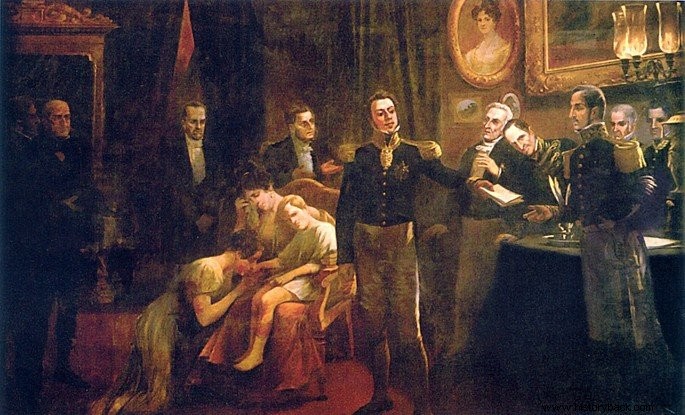The Regency Period (1831-1840) was the time when Brazil was ruled by regencies, as the heir to the throne was a minor.
This period is characterized by moments of great turmoil in Brazil with several civil uprisings.
It ends with the Majority Coup that brought D. Pedro II to the throne at the age of fourteen.
Characteristics of the Regency Period
Dom Pedro I faced several internal problems such as lack of support from economic and external elites, such as the defeat in the Cisplatine War.
Furthermore, with the death of Dom João VI in Portugal, he had been acclaimed D. Pedro IV of Portugal.
At this moment when the emperor loses his popularity, he decides to abdicate the Brazilian throne. At that time, however, his heir, D. Pedro II, could not govern, as he was 5 years old. The solution, foreseen by the Constitution of 1824, was to form a Regency until D. Pedro II reached the age of majority.
Revolts of the Regency Period
A time of great power struggle and political instability opens, giving rise to a series of conflicts:
- Cabanagem, in the Province of Grão-Pará (1835 – 1840);
- War of the Farrapos (or Farroupilha Revolution), in the Province of São Pedro do Rio Grande do Sul (1835 – 1845);
- Revolt of the Malês, Province of Bahia (1835);
- Sabinada, in the Province of Bahia (1837 – 1838);
- Balaiada, in the Province of Maranhão (1838 – 1841).

The Regencies
The Regency Period had the following regencies:
- Provisional Triune Regency (April to July 1831)
- Permanent Triune Regency (1831 to 1834)
- One Regency of Father Feijó (1835 – 1837)
- One Regency of Araújo Lima (1837 – 1840)
Political groups of the Regency Period
At that time, there were three political groups each advocating a different government position:
Moderate Liberals (also known as ximangos):defended the political centralism of the constitutional monarchy;
Exalted Liberals (nicknamed farroupilhas):they defended the federalization of the government, with more powers for the provinces and the end of the Moderating Power.
Restorers (or caramurus):they were in favor of the return of D. Pedo I. After his death, in 1834, several members joined the moderate liberal party.
National Guard (1831)
In 1831 the National Guard was created to counterbalance the power that the Army had in the government. This armed body would be made up of citizens who had the right to vote, that is, the Brazilian elite. would play an important role in Brazilian politics.
See more:National Guard
Additional Act (1834)
The Additional Act was a set of liberal proposals introduced in the 1824 Constitution.
Among these measures we can highlight the creation of Provincial Legislative Assemblies whose deputies would have a two-year term and the provincial governments could create taxes, hire and fire employees.
It was also determined that regency would be exercised by one person and not three. The first regent was Father Antônio Feijó.
See more:Additional Act of 1834
End of the Regency Period
The consequences of political instability are the regency revolts that took place in various parts of Brazil as we saw above.
With the objective of putting an end to the disorder and unrest, which would lead to the disintegration of the Brazilian territory, the Liberal Party proposes that the majority of D. Pedro II be brought forward.
The idea is put to a vote in the House, but is not approved. In this way, the politicians plot the Majority Coup, declaring D. Pedro II of age at 14.
A year later, D. Pedro begins to govern Brazil and the Second Reign begins.
We have more texts on the subject for you :
- Dom Pedro II
- Majority Strike
- Second Reign
